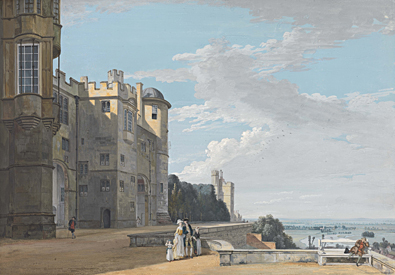Ever since his death two hundred years ago Paul Sandby (1731-1809) has been damned with faint praise as “the father of English watercolour painting”. Sandby was born into the age of Hogarth, prospered during the era of Joshua Reynolds – playing an active part as one of the founders of the fledgling Royal Academy – and contributed to the founding of a native school of British landscape painting. But it has been his fate to be remembered as a forerunner, a journeyman whose dutifully literal records of the natural scene were destined to be overtaken and transformed by the more poetic and imaginative pioneers of the Romantic movement – Thomas Girtin, John Constable and above all J.M.W. Turner. Henry Fuseli, who was the Royal Academy’s Professor of Painting at the turn of the nineteenth century, gave a lecture on “Invention” which included an unambiguous dig at everything that Sandby stood for. Fuseli attacked what he saw as the prevailing spirit of conservatism in English landscape art, commenting that most landscapes were merely pedestrian works of record, no more than a “tame delineation of a given spot; an enumeration of hill and dale, clumps of trees, shrubs, water, water, meadows, cottages and houses” – mere “topography”, in other words, “a kind of map-work.”
Sandby was dead by the time Fuseli’s words were published, but he was certainly the principal target of the attack. He had founded his career on topographical accuracy, priding himself precisely on the absence of that very quality of transfiguring imagination that the Romantics berated him for lacking. He had in fact trained in “map-work”, learning his trade as a military draughtsman in Scotland in the immediate aftermath of the failed Jacobite rebellion of 1745. His earliest works include a number of chillingly dispassionate records of the landscape...
Sandby was dead by the time Fuseli’s words were published, but he was certainly the principal target of the attack. He had founded his career on topographical accuracy, priding himself precisely on the absence of that very quality of transfiguring imagination that the Romantics berated him for lacking. He had in fact trained in “map-work”, learning his trade as a military draughtsman in Scotland in the immediate aftermath of the failed Jacobite rebellion of 1745. His earliest works include a number of chillingly dispassionate records of the landscape...


